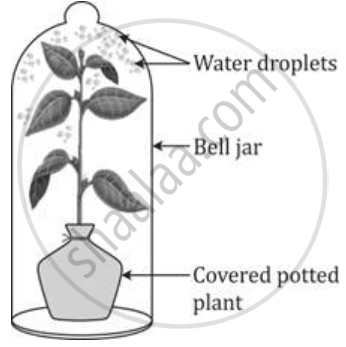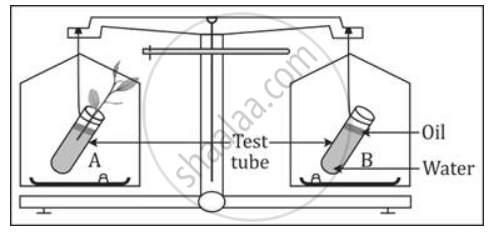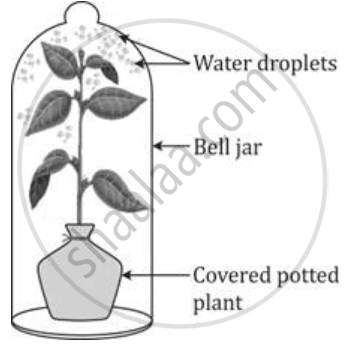Advertisements
Advertisements
Question
An apparatus as shown below was set up to investigate a physiological process in plants. The setup was kept in sunlight for two hours. Droplets of water were then seen inside the bell jar. Answer the questions that follow:

List three adaptations in plants to reduce the above mentioned process.
Solution
Adaptations in plants to reduce transpiration are
- Leaves may be modified into spines as in cactus or into needles as in pines.
- The number of stomata is reduced and they may be sunken in pits.
- Leaves may be folded or rolled up.
APPEARS IN
RELATED QUESTIONS
The loss of water in the form of water vapour through stomata on leaves is known as ___________.
Briefly explain, how transpiration helps in upward conduction of water in plants?
Choose the correct answer:
More water loss in plants is the cause of wilting. This can be checked by ____________
The figure given below represents an experimental setup with a weighing machine to demonstrate a particular process in plants. The experimental setup was placed in bright sunlight. Study the diagram and answer the following questions.

Name the process intended for study.
An apparatus as shown below was set up to investigate a physiological process in plants. The setup was kept in sunlight for two hours. Droplets of water were then seen inside the bell jar. Answer the questions that follow:

Suggest a suitable control for this experiment.
Give Technical Term
When cobalt chloride paper is placed on lower and upper surface of the leaf, the paper of which side becomes more pink?
Answer the following question.
Define and or explain the term:
Transpiration
Define transpiration.
______ involves evaporative loss of water from aerial parts.
Complete the following by choosing the proper option.
Stomata : Transpiration :: Hydathode : ____________.
